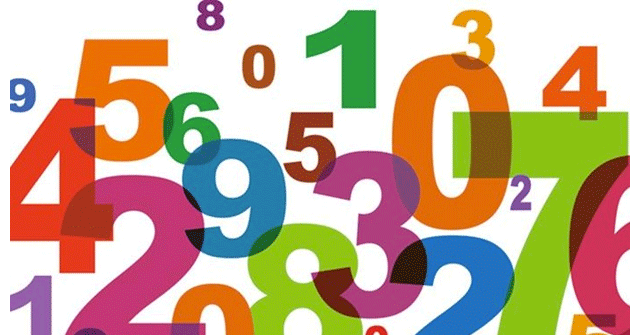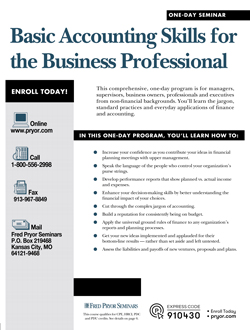
A chart is a list or listing of financial accounts used to record transactions by a business. An accountant usually creates the chart and makes it available to a bookkeeper who can record transactions. It lists the account codes of each type and dollar amount for each transaction. A chart of account can be used in several ways. Learn how you can create one. Here are some suggestions to help get you started. Let's look at different types of charts for accounts.
Create a chart of accounts
A chart of accounts is important for a business's financial records. It helps you keep track of financial transactions and allows for quick reviews of the business's financial performance. When accounts are not properly organized, however, it's difficult to make quick decisions. It can also lead to confusion when reviewing financial records or reports. There are three simple tips that will help you set up a chart. Once your chart of accounts is set up, it's possible to start tracking your company's financial performance.

Before you create your Chart of Accounts you need to have a clear picture of the needs of your customers. Your customers might want more information than what is included in the financial reports of your company. Ideally, your chart of accounts should be customized to your customer's industry. If you're working with a new customer, creating a new company file can help you automatically generate the chart of accounts for your client. This will allow you to meet the industry requirements of your client.
Add a new account
Once you are familiar with the process, adding a new account to the chart is easy. Select the Account Wizard option. This will walk you through the process of adding a new account. To create an account, select the name. You should choose a descriptive name that matches the real account's name. Once you have chosen the name of your account, you will be able to start creating transactions.
You can also make G/L Account inactive. Inactive accounts must have zero balance. Inactive accounts will not be added to the selection lists. However, they will remain in the system for historical reasons. Click the Inactive button to hide the account from Chart of Accounts List. Inactive accounts can not be deleted or edited. If you make changes to any field, however, they can be made back up.
Account deleted
You can delete an existing account by going to the Chart of Accounts. You must ensure that the account's ID is not referenced in any transactions. If the account balance is not zero, you can either delete or use the adjusting G/L transaction to lower it to zero. If an account has not been used for at least two consecutive years, the process is faster. After these steps have been completed, you can now delete the account form the Chart of Accounts.

Delete an account from the Chart of Accounts in Sage 50 by choosing the appropriate option from the list. This option will display a list of accounts that you wish to delete. To confirm, click "Delete". You can hide your account instead if you do not wish to delete it. This will affect the accuracy of your account data. To delete the account click "Delete" and then click OK.
FAQ
What is an accountant and why are they so important?
An accountant tracks all your money, both earned and spent. They also record how much tax you pay and what deductions are allowable.
An accountant can help you manage your finances and keep track of your incomes and expenses.
They can prepare financial reports both for individuals and companies.
Accounting professionals are required because they need to be able to understand all aspects of the numbers.
A professional accountant can also help with taxes, so that people pay as little tax as they possibly can.
Accounting Is Useful for Small Business Owners
The most important thing you need to know about accounting is that it's not just for big businesses. It is useful for small-business owners as it helps them track all the money that they spend and make.
You probably know how much money your business is making each month if you are a small-business owner. What if you don’t have an accountant to do this for you? You may wonder where you're spending your money. You could also forget to pay bills on-time, which could impact your credit score.
Accounting software makes managing your finances simple. And there are many different kinds available. Some are completely free, while others can cost hundreds of thousands of dollars.
But whatever type of accounting system you use, you'll want to understand its basic functions first. This way, you won't waste time learning how to use it.
You should learn how to do these three basics tasks:
-
You can enter transactions into your accounting system.
-
Keep track of incomes and expenses.
-
Prepare reports.
Once you've mastered these three things, you're ready to start using your new accounting system.
What does it entail to reconcile accounts?
Reconciliation is the process of comparing two sets numbers. The "source" set is known as the "reconciliation," while the other is the "reconciled".
The source is made up of actual figures. The reconciliation represents the figure that should actually be used.
You could, for example, subtract $50 from $100 if you owe $100 to someone.
This process ensures that there aren't any errors in the accounting system.
Statistics
- a little over 40% of accountants have earned a bachelor's degree. (yourfreecareertest.com)
- According to the BLS, accounting and auditing professionals reported a 2020 median annual salary of $73,560, which is nearly double that of the national average earnings for all workers.1 (rasmussen.edu)
- In fact, a TD Bank survey polled over 500 U.S. small business owners discovered that bookkeeping is their most hated, with the next most hated task falling a whopping 24% behind. (kpmgspark.com)
- The U.S. Bureau of Labor Statistics (BLS) projects an additional 96,000 positions for accountants and auditors between 2020 and 2030, representing job growth of 7%. (onlinemasters.ohio.edu)
- BooksTime makes sure your numbers are 100% accurate (bookstime.com)
External Links
How To
Accounting for Small Businesses: How to Do It
Accounting for small businesses is one of the most important tasks in managing any business. This involves tracking income and expenses as well as preparing financial reports and tax payments. You may also need to use software programs like Quickbooks Online. There are many different ways you can do your small business accounting. You need to choose the most appropriate method for your business. Below we have listed some of the top methods for you to consider.
-
You can use paper accounting. If you like simplicity, paper accounting might be the best option. This method is very simple. You simply need to record transactions every day. However, if you want to make sure that your records are complete and accurate, then you might want to invest in an accounting program like QuickBooks Online.
-
Online accounting is a great option. Online accounting makes it easy to access your accounts anywhere, anytime. Wave Systems, Freshbooks, Xero and Freshbooks are some of the most popular options. These software are great for managing your finances, sending invoices and paying bills. These programs offer many features and benefits. They also make it easy to use. These programs are a great way to save time and cash on your accounting.
-
Use cloud accounting. Another option you have is cloud accounting. It allows you secure storage of your data on a remote server. When compared to traditional accounting systems, cloud accounting has several advantages. Cloud accounting doesn't require expensive hardware and software. You have better security since all your information can be accessed remotely. It saves you the hassle of backing up your data. Fourth, it makes it easier for you to share your files with other people.
-
Use bookkeeping software. Bookkeeping software is similar with cloud accounting. However you must purchase a computer in order to install the software. Once the software is installed, you will have access to the internet to view your accounts whenever and wherever you like. In addition, you will be able to view your accounts and balance sheets directly through your PC.
-
Use spreadsheets. Spreadsheets are useful for entering financial transactions manually. One example is a spreadsheet you can use to track your daily sales. You can also make changes whenever you like without needing to update the whole document.
-
Use a cash book. A cashbook is a book that records every transaction you make. There are many different shapes and sizes of cashbooks depending on how much room you have. You can either use a separate notebook for each month or use a single notebook that spans multiple months.
-
Use a check register. A check register can be used to organize receipts, payments, and other information. To transfer items to your check list, all you have to do is scan them in your scanner. Once there, you can add notes to help you remember what was purchased later.
-
Use a journal. A journal is a logbook which keeps track of your expenses. This is especially useful if you have frequent recurring expenses such rent, utilities, and insurance.
-
Use a diary. Use a diary. It is simply a notebook that you keep for yourself. You can use it for tracking your spending habits or planning your budget.